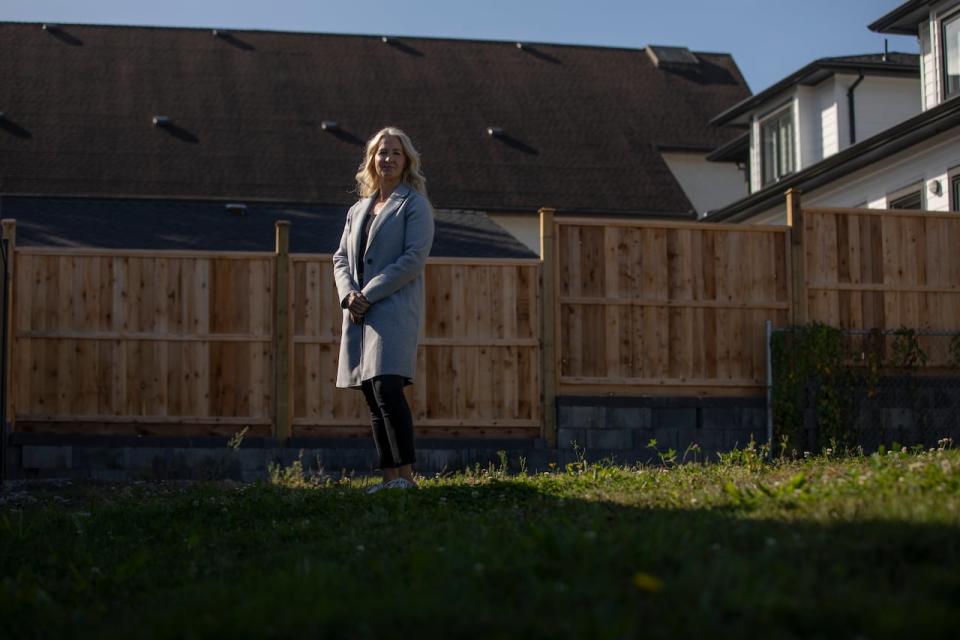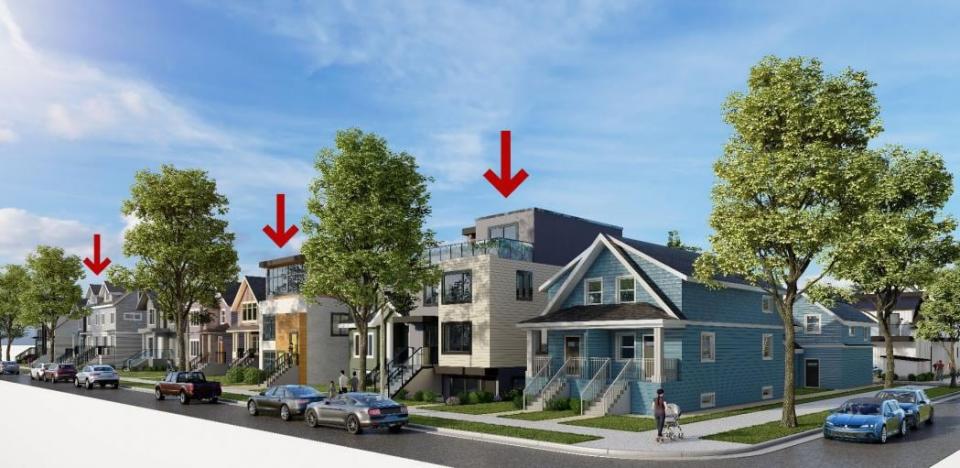Laneway homes coming to Burnaby as city tries to battle housing crisis

Laneway homes will soon be popping up across Burnaby, B.C., thanks to a change in the city's zoning bylaws.
For Jacqueline Dupuis, executive director of Aunt Leah's Foundation, news of city council's decision and the opening of permit applications on Monday, is a welcome relief.
The organization, which provides housing to young mothers and women who've been involved in the foster care system, has plans to build a laneway home behind one of its existing multi-family houses in Burnaby. In anticipation of the rule change, the group began planning the expansion about a year ago, and has a waiting list of eligible occupants.
"We've got a beautiful plot of land in the backyard that is ready for a laneway home," Dupuis said.

Jacqueline Dupuis, executive director at Aunt Leah’s place, says the backyard at one of its existing homes is ready for a laneway house. Once built, the 1,500 square-foot, two-storey home will house up to three vulnerable moms and their babies. (Ben Nelms/CBC)
The two-storey, 1,500-square-foot home will have the potential to house three moms and their babies. The project is expected to cost $600,000, and fundraising for the project through major grants and donors is ongoing.
"We're really excited to be able to add some more units so that we can provide safe and affordable housing for more moms," she said.
Burnaby, a suburban city of about 250,000, is composed primarily of single-family homes. However, it's also a stronghold for older low-rise apartment buildings and an ever-growing collection of modern highrises which are grouped around SkyTrain stations.
Rental housing
Single-home lots in Burnaby are notably large, and the population density is about half of Vancouver's. Despite its comparatively low density, Burnaby's approval of laneway homes comes 14 years after Vancouver made the shift.
In a statement, Burnaby's public affairs manager said city staff expect many laneway homes to be built as intergenerational housing, providing grandparents or young families a separate house on a family-owned lot.
Makiko Ara, a homeowner and property manager, envisions building a laneway home both on the property where she lives with her family and a rental property she owns.
The laneway home on the family property would create more housing for relatives, while the laneway home on the rental property is an investment.
An older three-bedroom home is currently sitting on the large rental lot. She plans to knock its garage down, to make way for a two-storey, two-bedroom laneway rental house.
"We've been looking at how we can maximize this property," she said.
Ara expects the construction to cost between $400,000 and $500,000, making it a solid investment when compared to the price of buying a similar sized condo. Once she has a building permit, construction is expected to take about six months.
"I like the charm of having a smaller house, it's very compact and efficient," she said.

In Vancouver, Morie Ford's daughter moved into the laneway house in her backyard after struggling with the rising costs of living and housing unaffordability. Vancouver first began allowing laneway homes in 2009, 14 years before Burnaby also made a bylaw change to allow for increased density. (Ben Nelms/CBC)
University of B.C. housing researcher Andy Yan says the bylaw change in Burnaby creates new opportunities and will increase the density and vibrancy of the city.
"This does and will open a certain stock of rental housing, particularly for families. Ones that don't necessarily fit in a studio or one-bedroom in a tower," he said.
Purpose-built rental incentives
The potential for increased density in Burnaby is just one of several recent policy changes that could help address the affordability crisis in Metro Vancouver and beyond.
B.C. just opened a centralized online portal called the Single Housing Application Service, aimed at streamlining the various permits required to build homes in certain areas.
Earlier this month, the federal government announced it was removing the GST that property developers have had to pay on new rental construction units, but details are still pending.
Prime Minister Justin Trudeau has admitted that he "should have" and "could have" done more to address the housing crunch, in a sit-down interview with CBC Frontburner podcast host Jayme Poisson.
While Canada's national housing agency says progress is being made on building enough housing to close the affordability gap, a recent report from the Canada Mortgage and Housing Corporation says almost 3.5 million new units will have to be built by the end of the decade.
Vancouver ushers in multiplexes

A rendering from the City of Vancouver of what multiplex housing could look like in traditional single-family home neighbourhoods. (City of Vancouver)
In Vancouver, city councillors recently approved sweeping changes to zoning and development bylaws that will permit multi-unit dwellings in neighbourhoods where only single homes have previously been allowed.
The change to encourage so-called multiplexes, homes with multiple units, is aimed at increasing density in areas of the city with "missing middle" housing, to help solve Vancouver's lack of appropriate, affordable housing while maintaining the character of neighbourhoods.
The changes approved by Vancouver city council in September will allow for three to six units on residential lots, depending on their size, at a maximum height of three storeys.


